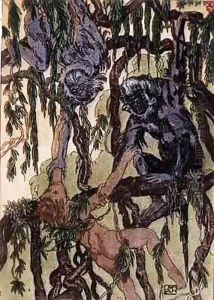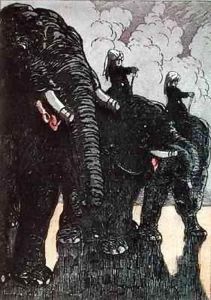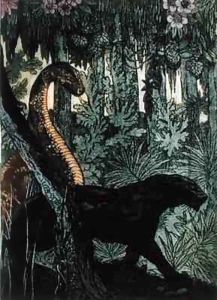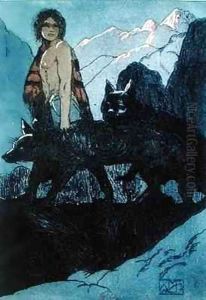Maurice de Becque Paintings
Maurice de Becque was a distinguished French artist and illustrator, born in 1875. His work, though not as widely recognized as that of his contemporaries, played a significant role in the artistic movements of the late 19th and early 20th centuries. De Becque's artistic journey was marked by a unique blend of innovation and adherence to classical traditions, making his contributions particularly noteworthy in the realms of illustration and decorative arts.
De Becque's career was multifaceted, encompassing a range of artistic mediums including painting, illustration, and decorative object design. He was particularly renowned for his exquisite illustrations that adorned books and literary works of the time, bringing to life the narratives with his distinctive style and finesse. His illustrations often depicted exotic and fantastical themes, reflecting the popular interests and fascinations of the period. This thematic choice not only highlighted his imaginative capabilities but also his skill in capturing the essence of the text he was illustrating.
Throughout his career, Maurice de Becque was actively involved in the artistic community, contributing to various exhibitions and artistic circles. Despite the acclaim he received from peers and critics alike, his work did not achieve the same level of public recognition as some of his contemporaries. This could be attributed to the highly competitive nature of the art world during his time, as well as the shifting trends that favored other styles and movements.
Maurice de Becque's artistic legacy, while somewhat obscured by time, remains significant for its contribution to the development of book illustration and decorative arts during a pivotal period in art history. His ability to merge traditional techniques with innovative approaches provided a fresh perspective within the artistic movements of his time. Maurice de Becque passed away in 1928, leaving behind a body of work that continues to be studied and appreciated by art historians and enthusiasts alike. His contributions, though perhaps not as celebrated in mainstream art history narratives, offer valuable insights into the evolution of illustration and decorative arts in the early 20th century.



